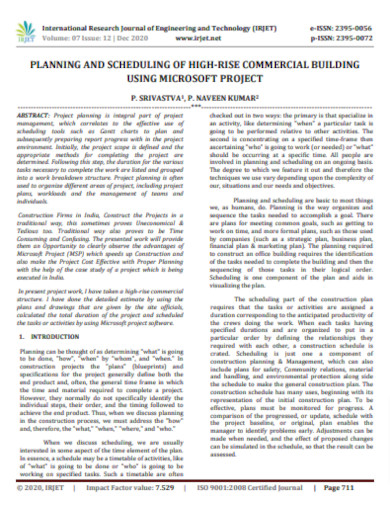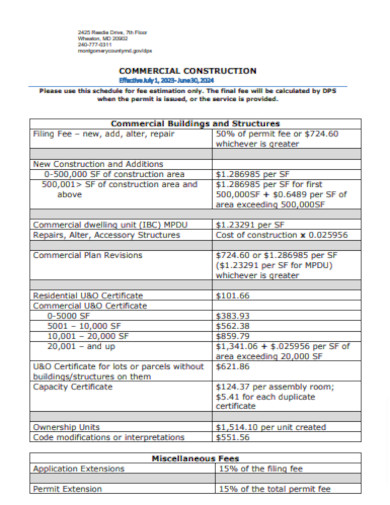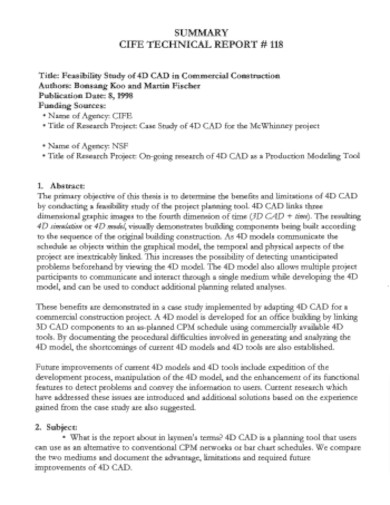25+ SAMPLE Commercial Construction Schedule
-

Commercial Construction Schedule
download now -

Weekly Commercial Construction Schedule
download now -

Commercial Daily Construction Schedule
download now -

7-Day Residential Construction Schedule
download now -

5-Day Commercial Construction Schedule
download now -

General Contractor Commercial Construction Schedule
download now -

Commercial Construction Plan Schedule
download now -

Commercial Construction Fee Schedule
download now -

Commercial Construction Project Management Schedule
download now -

Commercial Construction Building Schedule
download now -

Commercial Construction Permit Fee Schedule
download now -

Commercial Construction Schedule Outline
download now -

Fee Schedule Commercial Construction
download now -

Commercial Construction Schedule Application
download now -

Commercial Residential Construction Schedule
download now -

Simple Commercial Construction Schedule
download now -

Commercial Construction Schedule Layout
download now -

Commercial Construction Management Schedule
download now -

Commercial Construction Project Schedule
download now -

Commercial Construction Development Schedule
download now -

Sample Commercial Construction Schedule
download now -

New Commercial Construction Schedule
download now -

Basic Commercial Construction Schedule
download now -

Commercial Construction Schedule Format
download now -

Commercial Monthly Construction Schedule
download now -

Printable Commercial Construction Schedule
download now
FREE Commercial Construction Schedule s to Download
25+ SAMPLE Commercial Construction Schedule
Why Commercial Construction Schedules are Crucial
Key Components of a Commercial Construction Schedule
Strategies for an Effective Commercial Construction Schedule
Challenges & Solutions in Commercial Construction Scheduling
FAQ’S
How is a commercial construction schedule different from a residential construction s
Why is using construction management software beneficial for scheduling?
How often should a commercial construction schedule be updated?
What is the Critical Path Method (CPM) in commercial construction scheduling?
How do you manage unforeseen delays in a commercial construction project?
Why Commercial Construction Schedules are Crucial
Commercial construction projects encompass a range of undertakings from building corporate offices to creating massive shopping complexes. Given the size, complexity, and investment involved, the need for a structured Commercial Construction Schedule becomes paramount. Here’s why they are absolutely essential:
Magnitude and Complexity:
Commercial projects, given their scale, often have a myriad of intricate processes and tasks that need to be executed in a precise sequence. A schedule acts as the backbone, ensuring that each step is carried out in the right order and at the right time.
Stakeholder Management:
Commercial construction projects typically involve a diverse group of stakeholders, including investors, tenants, local authorities, and more. A detailed schedule ensures transparent communication, aligns expectations, and fosters trust among all involved parties.
Budget Adherence:
With significant investments at stake, any delay or inefficiency can result in substantial financial losses. A robust schedule maps out the expected expenditure over time, ensuring that the project remains within budget and helps in financial planning.
Resource Optimization:
Proper scheduling ensures optimal utilization of both human resources and machinery. It ensures that labor and equipment are available when needed, preventing costly idle times or bottlenecks.
Risk Management:
A good construction schedule factors in potential risks and disruptions. This proactive approach allows for contingency planning, ensuring that unexpected challenges are addressed promptly without derailing the entire project.
Regulatory Compliance:
Commercial structures are subject to strict regulations and inspections. A schedule ensures that tasks like obtaining necessary permits or undergoing mandated inspections are done timely, avoiding legal complications.
Quality Assurance:
A well-structured schedule allocates adequate time for each phase, ensuring that quality isn’t compromised in a rush to meet deadlines. It also provides buffer periods for rework or corrections if needed.
Coordination and Collaboration:
Multiple subcontractors and teams work simultaneously on commercial projects. A detailed schedule ensures they collaborate efficiently, avoiding overlaps or conflicts.
Client Satisfaction:
Meeting deadlines and delivering as promised is a key aspect of client satisfaction. A reliable construction schedule is instrumental in fulfilling commitments and building a good reputation in the industry.
Decision-making:
A construction schedule offers a clear picture of the project’s progress. It aids stakeholders in making informed decisions, be it about additional investments, changes in design, or marketing strategies.
In essence, a Commercial Construction Schedule acts as a roadmap, guiding teams through the intricate journey of construction, ensuring efficiency, transparency, and success. Without it, managing such large-scale projects would be akin to navigating uncharted waters without a compass
Key Components of a Commercial Construction Schedule
A Commercial Construction Schedule, given its significance in managing large-scale projects, is detailed and multifaceted. Here are the key components that form the foundation of such a schedule:
Project Milestones:
These are major events or turning points in a project. Examples include the completion of the foundation, topping out of the structure, and the end of the primary build phase.
Task Sequencing:
A detailed list of tasks or activities organized in the order they need to be executed. It takes into consideration dependencies where one task cannot start unless another is completed.
Duration Estimation:
This entails predicting how long each task or activity will take. It’s essential for determining the overall timeline of the project.
Resource Allocation:
This component outlines which resources (labor, machinery, materials) are needed for each task and when they’ll be required.
Budgeting and Cost Estimation:
This segment predicts the expected cost for each phase or task of the project, aiding in financial planning and cash flow management.
Risk Management and Contingency Plans:
Identifying potential risks or challenges the project might face and having backup plans in case those risks materialize.
Permit and Inspection Schedule:
Commercial projects often require multiple permits and inspections. This component ensures that the project remains compliant with local regulations and codes by earmarking time for obtaining necessary permits and undergoing mandated inspections.
Subcontractor Schedules:
Large commercial projects often involve multiple subcontractors, each responsible for different aspects of the build. Their schedules are integrated into the main schedule to ensure smooth coordination.
Communication and Reporting Plan:
This outlines when and how updates will be communicated to stakeholders, ensuring everyone is informed about the project’s progress.
Quality Assurance Checks:
Scheduled reviews and checks to ensure that the work meets the predetermined quality standards.
Safety and Training Plans:
Given the importance of safety in construction, this component schedules regular safety checks, equipment inspections, and training sessions.
Change Management:
Procedures and timelines for managing changes or adjustments to the project, be it due to client requests, unforeseen challenges, or other factors.
Closure and Handover Phase:
This covers the final stages of the project, including finishing tasks, final inspections, client walkthroughs, and the formal handover process.
A well-crafted Commercial Construction Schedule is a harmonization of these components, each vital in its own right. The integration ensures that every aspect of the project is considered, every stakeholder is informed, and every resource is optimized, paving the way for a successful completion.
Strategies for an Effective Commercial Construction Schedule
Creating an effective Commercial Construction Schedule is an art that blends project management science with practical knowledge. Ensuring your schedule is not just detailed but also functional can be the difference between a project that progresses smoothly and one plagued with delays and budget overruns. Here are some proven strategies to ensure effectiveness:
- Thorough Initial Planning: Before diving into scheduling, conduct comprehensive planning. Understand the project’s scope, identify stakeholders, review contracts, and gather as much information as possible.
- Utilize Technology: Leverage modern construction management software and tools which allow for real-time updates, easy adjustments, and collaborative input. Programs like Primavera, Microsoft Project, or Procore can be invaluable.
- Break Tasks Down: Use the Work Breakdown Structure (WBS) method to divide the project into smaller, more manageable tasks. This provides a clearer picture and allows for better allocation of resources.
- Factor in Dependencies: Recognize that some tasks can’t start until others finish. Ensure that these dependencies are clearly mapped out in the schedule.
- Allocate Resources Wisely: Overloading resources can lead to inefficiencies and burnout. Ensure that labor, machinery, and materials are distributed in a balanced manner throughout the project.
- Build in Buffers: Delays are a reality in construction. Incorporate buffer periods after critical tasks or milestones to account for unforeseen challenges.
- Regularly Update & Review: A schedule should be a living document. Regularly review and adjust the schedule based on actual progress and unforeseen challenges.
- Engage All Stakeholders: Ensure that all parties, from subcontractors to suppliers, are involved in the scheduling process. Their insights and commitments can make the schedule more realistic.
- Communication is Key: Establish clear communication channels. Ensure every team member knows where to look for updates and how to communicate changes or challenges.
- Risk Management: Identify potential risks early and incorporate contingency plans into the schedule. This proactive approach will help in mitigating disruptions.
- Prioritize Critical Path Method (CPM): The CPM helps identify the longest path of planned activities to the end of the project, and the earliest and latest that each activity can start and finish without making the project longer. This method helps in ensuring timely project completion.
- Stay Compliant: Be aware of all local regulations, codes, and required inspections. Integrate these compliance requirements into the schedule to avoid legal and regulatory delays.
- Seek Feedback: After the completion of the project, gather feedback on the schedule’s effectiveness. This will offer insights for improvement in future projects.
By weaving these strategies into the fabric of your Commercial Construction Schedule, you’ll be better equipped to tackle the myriad challenges that large-scale projects often present, ensuring timely completion, stakeholder satisfaction, and optimal resource utilization.
Challenges & Solutions in Commercial Construction Scheduling
Commercial construction projects are multi-faceted endeavors, and their scheduling can be confronted by a range of challenges. Recognizing these challenges and proactively developing solutions is essential for successful project completion. Here’s a breakdown:
1. Challenge: Complex Supply Chains
Solution: Develop strong relationships with multiple suppliers and maintain a buffer stock of critical materials. Using technology for inventory management and procurement can also streamline supply chain operations.
2. Challenge: Stringent Regulatory & Inspection Requirements
Solution: Regularly update the team on local building codes and regulations. Schedule ample time for obtaining permits and incorporate inspection timelines into the main schedule.
3. Challenge: Stakeholder Misalignment
Solution: Establish clear communication channels. Hold regular stakeholder meetings to review progress, align on priorities, and address concerns. The more informed and engaged stakeholders are, the smoother the project will run.
4. Challenge: Labor Shortages
Solution: Engage in long-term contracts with staffing agencies or labor unions. Also, invest in training programs to develop skills within the existing workforce.
5. Challenge: Unexpected Site Conditions
Solution: Conduct thorough site surveys and assessments before finalizing the schedule. Incorporate contingency time for unexpected site-related challenges like unfavorable soil conditions or hidden infrastructure.
6. Challenge: Scope Creep (Unplanned changes or additions)
Solution: Establish a robust change management protocol. Ensure any change to the project’s scope undergoes a formal approval process, and its impact on the schedule is duly considered.
7. Challenge: Adverse Weather Conditions
Solution: Monitor weather forecasts closely, especially during sensitive phases of construction. Build in buffer days for potential weather-related disruptions.
8. Challenge: Inadequate Technology Integration
Solution: Invest in modern construction management software that facilitates real-time updates, collaboration, and tracking. Training the team to use these tools effectively is also crucial.
9. Challenge: Conflicts Among Subcontractors
Solution: Clearly define roles and responsibilities for each subcontractor. Regular coordination meetings can help address potential conflicts before they escalate.
10. Challenge: Budget Overruns
Solution: Regularly review the budget in relation to progress. Any deviation from the planned budget should be investigated immediately, and corrective measures taken.
11. Challenge: Quality Concerns
Solution: Schedule regular quality checks. Engaging third-party quality assurance teams can also offer an unbiased view of the work’s quality.
12. Challenge: Safety Incidents
Solution: Prioritize safety training and regular safety audits. Ensure safety protocols are integrated into the daily routine and are part of the schedule itself.
By recognizing these challenges early and having proactive solutions in place, commercial construction projects can remain on track, ensuring timely and efficient delivery.
FAQ’S
How is a commercial construction schedule different from a residential construction s
While both types of schedules serve a similar purpose, commercial schedules often involve more complexities due to the scale and diversity of commercial projects. This can include managing multiple subcontractors, adhering to stringent regulations, and coordinating with a broader range of stakeholders.
Why is using construction management software beneficial for scheduling?
Construction management software provides real-time updates, facilitates collaboration, and offers tools for tracking progress and resources. This digital approach minimizes errors, streamlines communication, and enhances overall project efficiency.
How often should a commercial construction schedule be updated?
Ideally, the schedule should be reviewed and updated regularly, often weekly, or whenever significant changes or delays occur. Real-time adjustments help in managing unforeseen challenges effectively.
What is the Critical Path Method (CPM) in commercial construction scheduling?
CPM is a technique used to identify and schedule tasks that determine the overall project duration. It helps in focusing on tasks that, if delayed, would extend the project’s completion time.
How do you manage unforeseen delays in a commercial construction project?
Incorporating buffer periods or contingency days in the schedule can help manage unexpected delays. Additionally, having a robust change management protocol ensures that any alterations to the timeline are communicated and managed efficiently.
a commercial construction schedule is the backbone of any large-scale construction project. It not only provides a comprehensive roadmap for timely project completion but also serves as a communication tool, ensuring that all stakeholders, from subcontractors to investors, are aligned and informed. The complexities of commercial construction, with its multifaceted supply chains, regulatory requirements, and diverse stakeholders, underscore the importance of meticulous scheduling.
